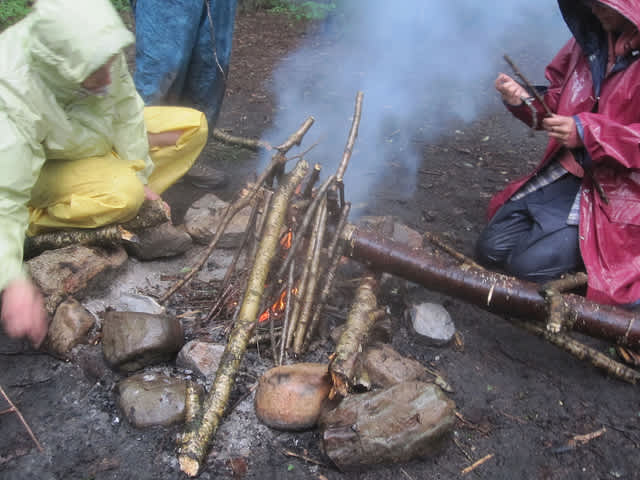Methods for Burning Wet Wood
Agnieszka Spieszny 09.14.11

It’s been raining a few days prior to your camping venture this weekend. You arrive to your site and all the downed wood that you can find in the nearby forest is wet. Or you want to start a bonfire in your backyard but you had no rain cover for the wood you’ve collected already. Here are a few tips to help you start keep your fire going when your wood is wet and it has stopped raining.
Start small. You will unquestionably need a few extra supplies to get this thing going. Find a few small twigs to place as your air-able bed in the center of your fire pit. Get them as dry as you can first, shake them off, and if possible, roll them against a towel, paper towel, or clothing to soak up excess water.
Once your twig bed is placed, stick many pieces of rolled up newspaper, magazines, dryer lint, or other flammable material in a few pockets of the twigs. Without a doubt, the paper you use must be dry. Light this with a match or lighter. Keep adding paper in between or even beneath the twigs to get this going. Cheat a little bit by pouring small amounts of lighter fluid on the twigs gradually until your fire catches naturally.
Prepare the next set of wood, i.e. small branches, by shaking them off of excess water and rolling in a towel just like the initial twigs. Stand this wood up along the sides of the fire pit as you get the fire going so that they dry out as much as possible. When dry enough, build the fire up with these branches. Split them into smaller pieces to give yourself more surface area to work with.
Using a hatchet, split bigger logs long-ways down the middle to expose the dry core inside. If the wood is still really wet on the outside, stand it up along the sides of the fire pit as the branches. Face the wet bark at the fire. After a few minutes, your wood may not be completely dry, but suitable for the fire. Placing the exposed inner core on the flame first will allow more time for the wet bark to dry.
If there is no hatchet available, use anything sharp, like a knife, to shave off the bark to get to the wood just beneath the bark. The bark acts as a rain jacket for wood. If you can get past the bark to the wood, it’ll likely be dry on the inside. Otherwise, peel off slivers of bark and wood gradually with your nails to get as close to the core as you can.
Remember to be persistent. Keep adding paper if necessary and once you have the fire going, do not let it go out. Blow on the embers gently for a few seconds once it’s going to give the fire that extra push of air it needs to revitalize. If you intend on keeping this fire going for a long time, consistently get more firewood dry and ready to add onto the fire.
Supplies you may need:
- Paper starters or dryer lint/sheets
- Hatchet
- Knife
- Lighter fluid
- Tower/paper-towel
Photo: EDWW

